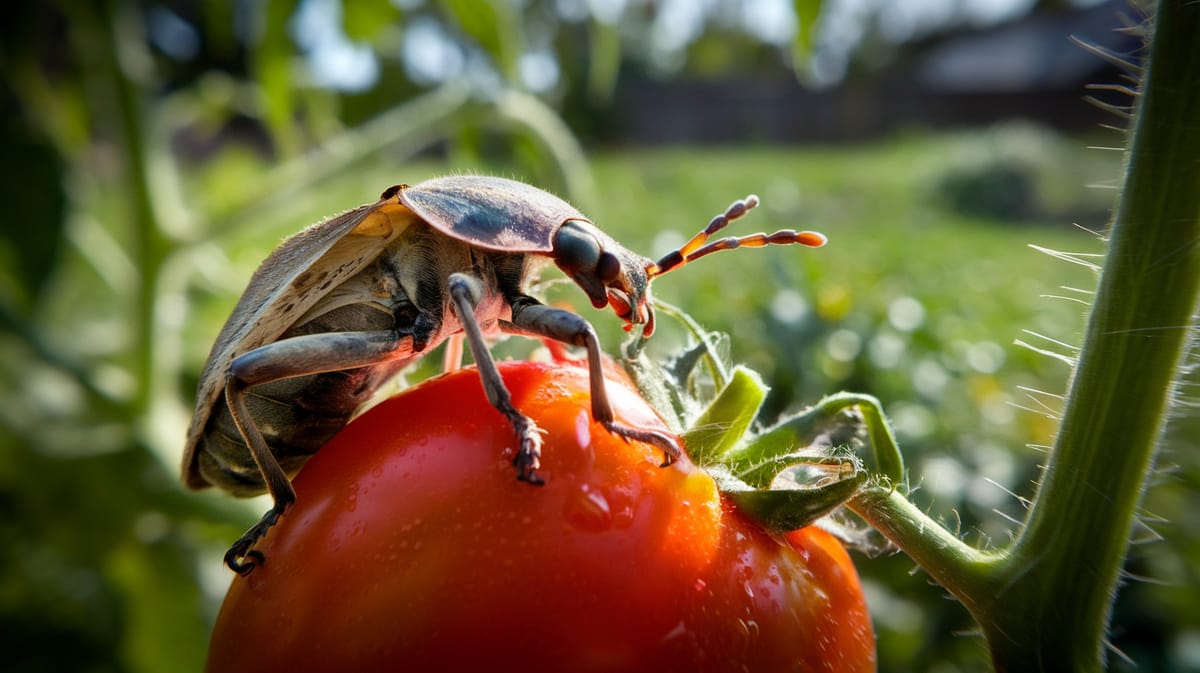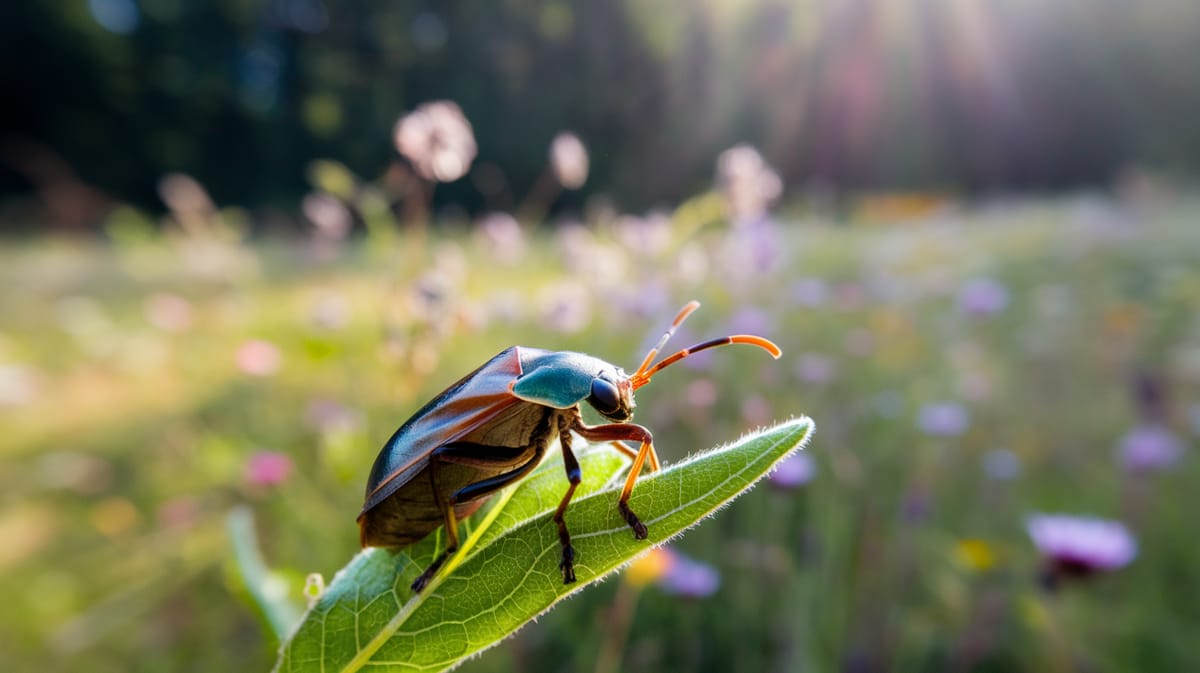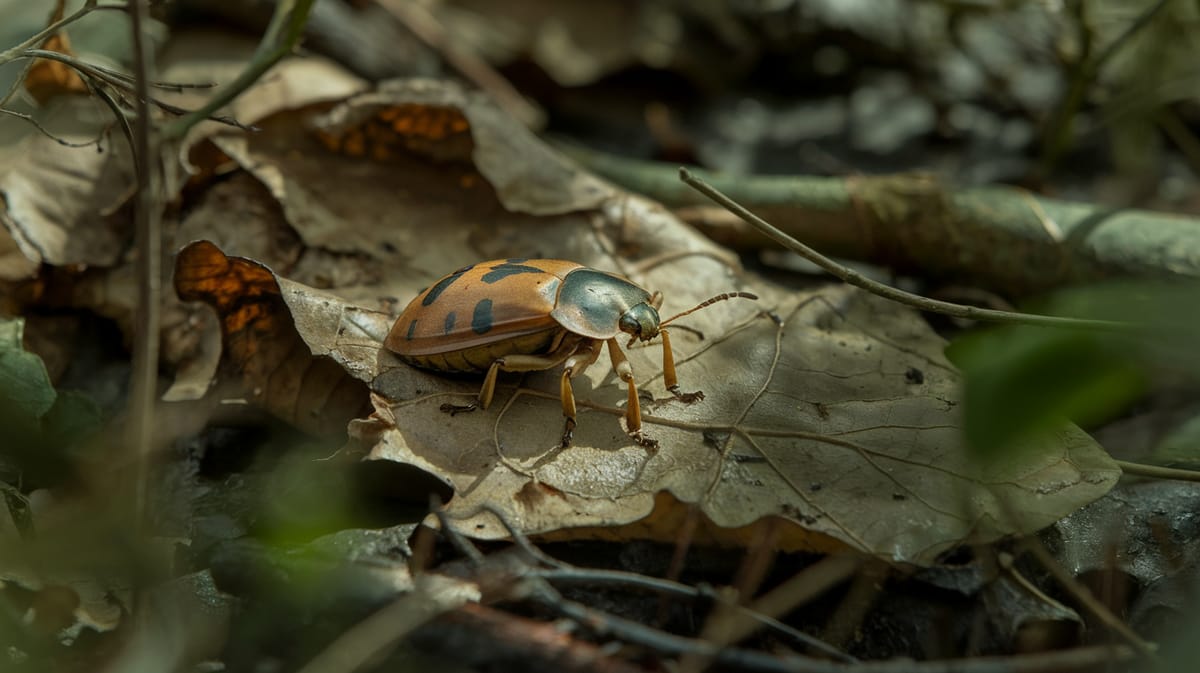Stinkbug
Shielded by nature's armor, the stinkbug releases a pungent odor when threatened, playing a vital role in pest control and maintaining ecological balance.

Key Insights at a Glance
Did You Know?
Taxonomy & Classification
Stinkbugs are known for their distinct shield-like shape and the defensive odor they release, showcasing their adaptation to deter predators. Let's understand the evolutionary journey and classification of these remarkable herbivores.
Global Presence
The stinkbug genus Halyomorpha includes species like the brown marmorated stink bug, found across Asia and spreading to North America and Europe.
Evolutionary Adaptation
Stinkbugs evolved about 230 million years ago, developing unique scent glands as a survival mechanism against predators and harsh environments.
Lifecycle and Growth
A remarkable journey of transformation from Egg to Adult.
Egg
Laid in clusters on leaves, eggs are small and barrel-shaped, hatching with favorable conditions.
Nymph
Nymphs resemble adults but lack wings, undergoing five molts to reach maturity.
Adult
Fully winged, adults emit defensive odors and engage in reproduction, ensuring population growth.
Dietary Habits
A resilient feeder with versatile habits, it relies on plant sap and occasionally preys on small insects when needed.
| DIET TYPE | DESCRIPTION |
|---|---|
| Primary Diet | Primarily consumes plant sap from various crops like fruits, vegetables, and ornamental plants. |
| Secondary Diet | Ingests smaller insects like caterpillars and aphids, supplementing its diet with these protein sources. |
| Occasional | Opportunistically feeds on seeds and fruits, especially when plant sap is less accessible. |

Behaviour and Adaptations
Discover the fascinating adaptations that make the Stinkbug a survival expert.
Chemical Defense
Releases a foul-smelling odor to deter predators and protect itself.
Camouflage
Blends into its environment to avoid detection by predators.
Wide Diet
Consumes a variety of plants, making it adaptable to different environments.
Ecosystem Impact
Ecosystem Impact
Natural Pest Control
Stinkbugs help control pest populations by preying on harmful insects, maintaining balance.
Food Source
They serve as a food source for birds and other predators, supporting biodiversity.
Decomposer Role
Stinkbugs help in breaking down organic matter, enriching soil nutrients.
Conservation Challenges
Addressing the major threats facing stinkbug populations is crucial for their conservation.
Chemical Exposure
Pesticides harm stinkbug populations and disrupt ecosystems.
Habitat Loss
Urbanization and agriculture diminish vital stinkbug habitats.
Climate Change
Altered weather patterns affect stinkbug breeding and survival.
Frequently Asked Questions
How long do Stinkbug live?
Stinkbugs typically live between six to eight months. Their lifespan can vary based on environmental conditions and species. They go through several life stages, including egg, nymph, and adult. After reaching adulthood, they are often most active in warmer months.
What do Stinkbug eat?
Stinkbugs primarily feed on plants, including fruits, vegetables, and ornamental plants. They use their piercing mouthparts to suck juices from these plants, which can cause damage to crops and gardens. Some species may also feed on other insects.
Are Stinkbug poisonous?
Stinkbugs are not poisonous to humans or pets. They release a foul-smelling odor as a defense mechanism, which can be unpleasant but is not harmful. This odor is used to deter predators and is harmless if encountered.
Are Stinkbug endangered?
Stinkbugs are not considered endangered. Many species, such as the brown marmorated stinkbug, are widespread and even considered pests in some regions due to their impact on agriculture. Their populations are generally stable and not at risk of extinction.
What do Stinkbug symbolize?
In various cultures, stinkbugs symbolize transformation, protection, and resilience. This symbolism stems from their ability to adapt and protect themselves with their odor. They can also represent persistence due to their resilience in diverse environments.
Do Stinkbug bite?
Stinkbugs do not bite humans. They have mouthparts designed for piercing and sucking plant juices, not for biting. While they may cause damage to plants, they are not a threat to human health in terms of biting.
What color are Stinkbug?
Stinkbugs are usually brown, green, or gray, with some species displaying a mix of these colors. Their color can help them blend into their environment as a form of camouflage to avoid predators. The brown marmorated stinkbug, for example, is mottled brown.
Does a Stinkbug have wings?
Yes, stinkbugs have wings. They have two pairs of wings: the forewings, which are hardened at the base and membranous at the tips, and the hindwings, which are completely membranous. These wings allow them to fly short distances when necessary.
What does a Stinkbug look like?
Stinkbugs have a distinctive shield-shaped body, typically measuring about half an inch in length. They have six legs, antennae, and a small head compared to their body. Their bodies are often mottled or patterned, aiding in camouflage.
Is a Stinkbug an insect?
Yes, stinkbugs are insects. They belong to the order Hemiptera and the family Pentatomidae. As insects, they have three main body parts: the head, thorax, and abdomen, along with six legs and antennae. Their defining feature is their shield-shaped body.
Related Insects
Discover insects with similar characteristics to Stinkbug - including shared habitats, diets, and taxonomic classifications
Share this profile
Help others discover Stinkbug
